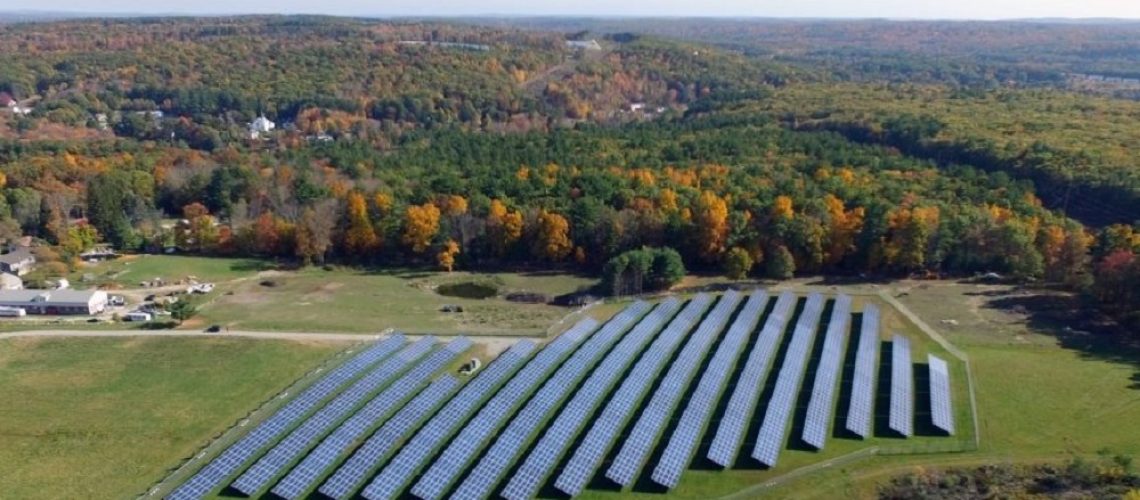BlueWave Solar, a certified B Corp, is committed to integrating Environmental Social Governance throughout development of dual-use solar projects.
Environmental Social Governance (ESG) may have been used first in a 2004 report titled “Who Cares Wins”, which was a joint initiative of financial institutions spearheaded by the United Nations. The thought behind ESG is that there is much value far behind financial advancement in focusing on sustainability throughout an organization. The three pillars can be defined this way:
- The environmental pillar focuses on the making positive impact on the environment. Examples include climate change, greenhouse gas emissions, biodiversity, deforestation, pollution, energy efficiency and water management.
- The social pillar focuses on people and relationships not only within the workplace but also in regard to customers. Diversity, equity and inclusion movements fall under the social pillar.
- The governance pillar focuses on modern day organizational governance, which can include the makeup of the board, cyber security practices, executive compensation, and the prevention of bribery and corruption.
BlueWave is certified B Corp based in Boston, Mass, that was recently acquired by Axium Infrastructure, an infrastructure investment management firm with a North American renewables portfolio. BlueWave has long believed in responsible development and is driven by strong adherence to ESG. In fact, BlueWave earned a top score in the Governance Impact Area of B Lab’s Impact Assessment, earning the company a spot on the list of the 2022 Best for the World B Corporations. Axium is also committed to integrating ESG throughout its project development and management process. The acquisition enables BlueWave to build, own and manage projects within its development portfolio.
“We feel incredibly lucky to have landed with such as well-aligned partner from a values perspective. This will enable BlueWave to transition from what is primarily a develop-and-sell model to a develop, build, own and operate model,” said Trevor Hardy, co-founder and CEO of BlueWave.
And while BlueWave was the first company to complete a community solar project in the state of Massachusetts, it recently spun off its community solar servicing business as Perch Energy. BlueWave still plans to develop, own and operate community solar projects and work with partners like Perch to acquire and manage the customers.
Agrivoltaics
BlueWave was the developer of an agrivoltaic installation in the state of Maine. The 4.2 MW solar project, which is owned and operated by NaviSun, is built on a 10-acre blueberry farm, providing protection for the crops, while also serving as a pilot project. The project was developed by BlueWave, which worked with CS Energy, the EPC partner, and Navisun, the owner operator, and University of Maine, the research partner to create a pilot program in which they are studying solar construction techniques as well as ways of harvesting blueberries that are grown among solar panels.
Floating solar
Another example of dual use is the development of floating solar or floatovoltaics. In July of 2021 BlueWave entered into a joint venture agreement with Ciel et Terre, the world’s leading floatovoltaics company, to develop floating solar projects in Massachusetts and other markets in the Northeast. BlueWave sees great opportunity in developing solar on man-made ponds and reservoirs, as it solves land-use problems while providing ecological benefits to the water resources where the system is located. In 2018, the National Renewable Energy Laboratory estimated that installing floating solar on the more than 24,000 man-made U.S. reservoirs could generate about 10% of the nation’s annual electricity production. Ciel et Terre has about 22 floating solar projects installed in the United States to date totally around 28 MW, with about 62 MW in various states of engineering and hundreds of MWs in various stages of development.
A dual use future
BlueWave is looking to expand its dual-use projects and prioritizes working with communities and individual farmers in finding the best use for their land. Hardy also noted that providing clean energy to low-to-middle income people is another major focus for BlueWave as one of the company’s ESG missions is to ensure that renewables are accessible to absolutely everyone. BlueWave also sees stand-alone battery storage as one of the most interesting dynamics in the market right now, and one that Hardy sees as vital to accelerating the energy transition. “To be part of a team where we are lucky enough to be in the right place at the right time and be very much the proactive participant in that transition is incredibly exciting” Hardy concluded.



